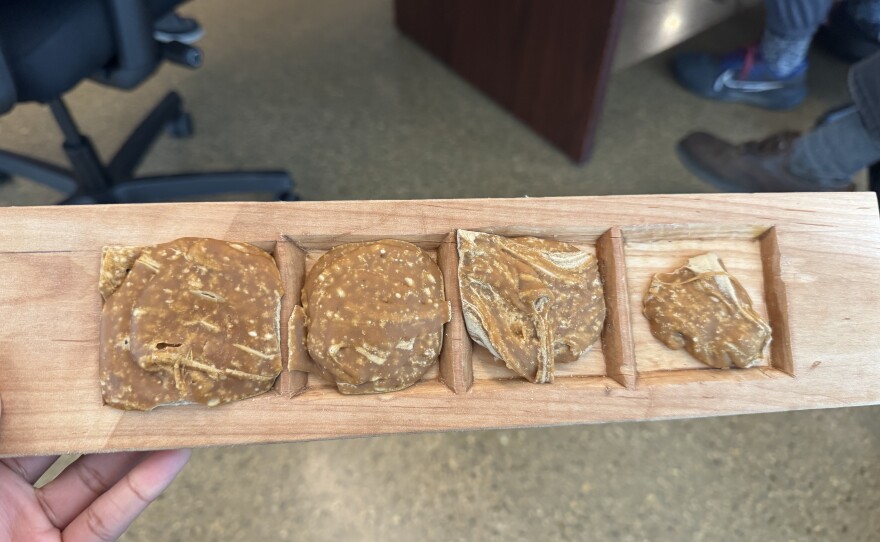A new program at Great Council State Park will give visitors a sweet opportunity to learn about Shawnee peoples’ history and culture.
Called Tapping Into History, it shares their ties to the tradition of maple tapping. Once a week, on the center’s second floor, the park’s cultural programs manager Talon Silverhorn, with the Eastern Shawnee Tribe of Oklahoma, describes what the practice looked like in the late 18th century.
Tapping Into History
When: 11:30 a.m. - 2 p.m., each Saturday in April
Where: Great Council State Park, 1587 U.S. 68, Xenia
He said native communities have turned sap into syrup and sugar for centuries.
“Everyone has different stories about how they learned or how it came to be, different cultural associations with it, but we are, at least in the region that maples are native to, unified through the making of maple sugar,” Silverhorn said.
Sugar maple trees can be found in the Eastern U.S., extending to west to Missouri and slightly south towards North Carolina and Tennessee. According to historical documents, camps of around 20 people would collect hundreds of gallons of sap over the course of two months from these trees and some other maple varieties.
The fire to boil out the water from the sap would burn continuously during the duration of sugar season, which goes from mid February to April.
“One of our ceremonies is called the ‘Drawing of the Trees’ in the early springtime. We make sugar, and we have dances for it,” Silverhorn said. “So this is really important to us, and it's been part of our traditions for quite a long time.”
And the time of year the sap is drawn does matter, he said.
The trees will still be dormant in the spring. According to Cornell University, the temperature fluctuations change the pressure in the tree, which will allow the sap to flow easier. And sugar content is typically highest in the spring, according to OSU researchers – right before the sugar is directed throughout the tree buds to bear leaves.
Shawnee people use sugar in the way many other cultures would use salt, said Silverhorn.
“We use salt as a preservative, but we don't necessarily use it as a season. So most of the time, the food that we're cooking, the soups and stews, they're flavored with sugar,” he said.
Many citizens of the three federally-recognized Shawnee tribes now live in Oklahoma, outside the native range of maples. So to continue the practice, they’ve turned to tapping other trees such as sycamore, black walnut and elms.
One of the sessions’ attendees was 13-year-old Hannah Gerakines.
The program has given her a new perspective on maple syrup and how widely accessible it is now, she said.
“I’m definitely going to think of all the manual labor that they had to put into it,” Gerakines said. “Because now we have machines to do it for us, so definitely going to think about the people that had to make it for themselves during one season of the entire year.”
While Silverhorn himself has been making maple sugar for about six years now, he said he developed the programming with his wife, Shelly Silverhorn, of the Navajo Nation, who has been making it for 17 years.
“We wanted to make sure that it was not only accurate, but that it also fit into a larger interpretation of seasonality, traditional ecological knowledge, land-based learning, and also modern practices,” he said. “This is not just something primitive that was done back in the day. This is something that actually has a real impactful meaning to our community today.”






